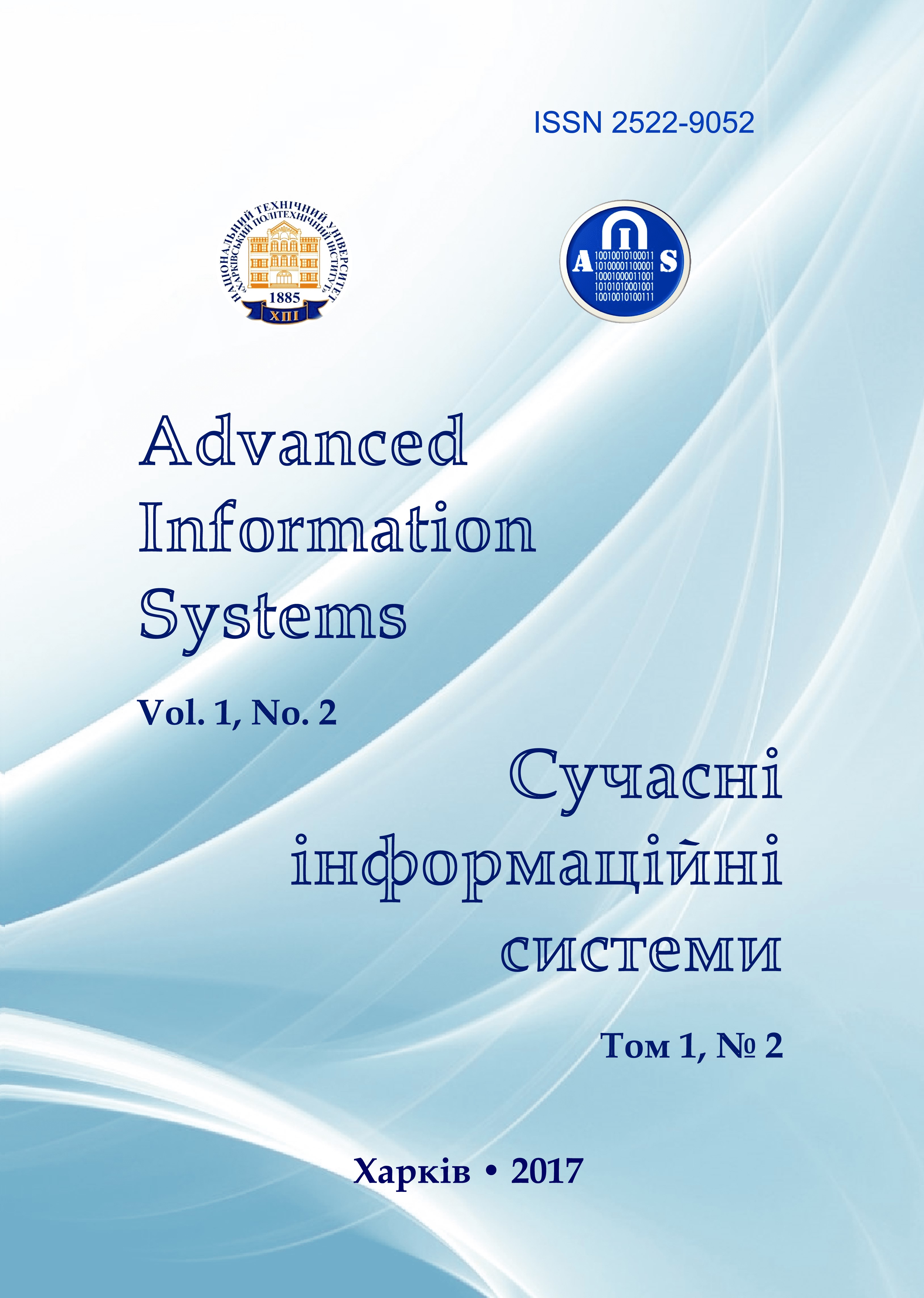Mathematical model of optimal distribution of applied problems of safety-critical systems over the nodes of the information and telecommunication network
Main Article Content
Abstract
Article Details
References
Ageev, D.V., Ignatenko, A.A. and Kopylev, A.N. (2011), "Metodika opredeleniya parametrov potokov na raznykh uchastkakh mul'tiservisnoy telekommunikatsionnoy seti s uchetom effekta samopodobiya" ["Method for determining the parameters of flows in different sections of a multiservice telecommunications network, taking into account the self-similarity effect"], Problemy telekommunikatsiy, [Telecommunications problems], No. 3 (5), pp. 18-37, available at: http://pt.journal.kh.ua/2011/3/1/113_ageyev_method.pdf (last accessed May 24, 2017).
Losev, Yu. I. and Rukkas, K. M. (2007), "Sravnitel'nyy analiz matematicheskogo apparata modelirovaniya telekommunikatsionnykh setey ["Comparative analysis of mathematical apparatus of modeling of telecommunication networks"], Systemy obrobky informatsiyi [Information Processing Systems], No. 8 (66), pp. 55-60.
Gelenbe, E. and Pujolle, G. (2010), Analysis and synthesis of computer systems (2nd Edition), Advances in Computer Science and Engineering, 309 p.
RFC 1122 – Requirements for Internet Hosts - Communication Layers, available at: http://rfc2.ru/1122.rfc (last accessed May 24, 2017).
Marder, N.S. (2006), Sovremennye telekommunikatsii [Modern telecommunications], Moscow, IRIAS, 255 p.
Kuchuk, G.A., Gakhov, R.P. and Pashnev, A.A. (2006), Upravlenie resursami infokommunikatsiy [Information and telecommunication resources management], Moscow, Fizmatlit, 220 p.
Pepelnjak, I. (2000), EIGRP Network Design Solutions: The Definitive Resource for EIGRP Design, Deployment, and Operation, CiscoPress, 384 p.
Paulsen, S. and Boens, J. (2012), Summary of the Workshop on information and communication technologies supply chain risk management, National Institute of Standarts and Technology, 21 p.
Kuchuk, G.A. and Pashnev, A.A. (2007), "Klassifikatsiya zadach upravleniya mul'tiservisnymi setyami raspredelennykh informatsionno-upravlyayushchikh system kriticheskogo primeneniya" ["Classification of control tasks for multi-service networks of distributed information-control systems for critical applications"], Problemy upravlinnyay edynoyu derzhavnoyu systemoyu tsyvil'noho zakhystu: zb. mat. NPK, 4.04.2007, Kharkiv, MNSU, UTsZU, pp. 104-106.
Olifer, V.G. and Olifer, N.A. (2012), Komp'yuternye seti. Printsipy, tekhnologii, protokoly [Computer networks. Principles, technologies, protocols], SPb. : Piter, 943 p.
Kosenko, V.V. and Kuchuk, N.H. (2016), "Modelyuvannya tekhnichnoy i struktury informatsiyno-telekomunikatsiynoyi merezhi na osnovi konkretnoyi realizatsiy iinformatsiynoyi struktury" ["Modeling the structure of technical information and telecommunications network based on the specific implementation of information structure"], Systemy obrobky informatsiyi [Information Processing Systems], Kharkiv, No. 9(146), pp. 167-171.
Kosenko, V.V. and Kuchuk, N.H. (2016), "Vzayemodiya tekhnichnykh I prohramnykh zasobiv pry upravlinni rozpodilom trafika" ["The interaction of hardware and software in the management of traffic distribution"], Systemy ozbroyennya I viys'kova tekhnika [“Systems of Arms and Military Equipment”], No. 3 (47), pp. 72-75.
Sobol', I.M. (2006), Vybor optimal'nykh parametrov v zadachakh so mnogimi kriteriyami [The choice of optimal parameters in problems with many criteria], Moscow, Drofa, 175 p.
Ovezgel'dyev, A.O., Petrov, E.G. and Petrov, K.E. (2002), Sintez i identifikatsiya modeley mnogofaktornogo otsenivaniya i optimizatsii [Synthesis and identification of models of multifactorial estimation and optimization], Kyiv, Naukova dumka, 163 p.
